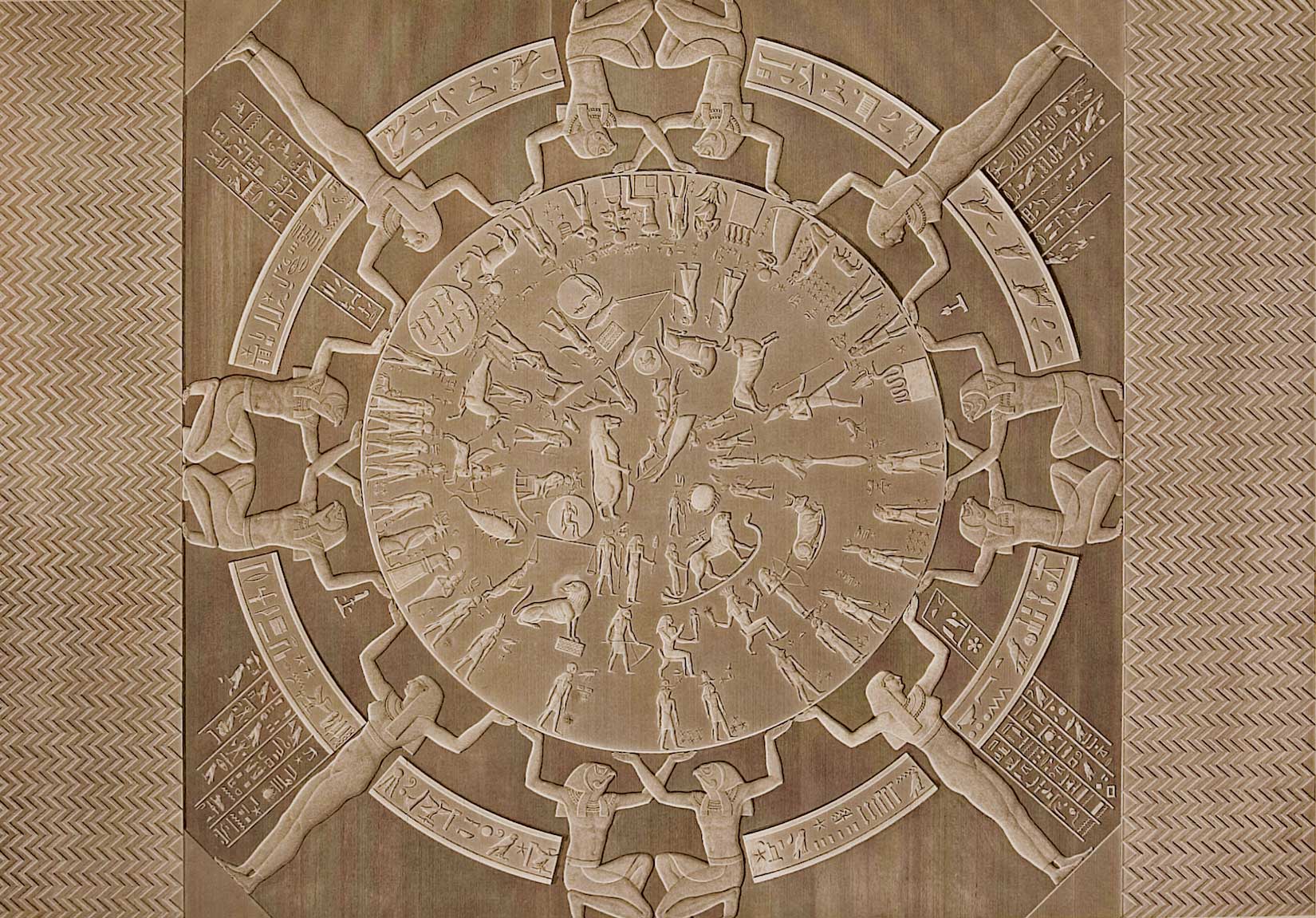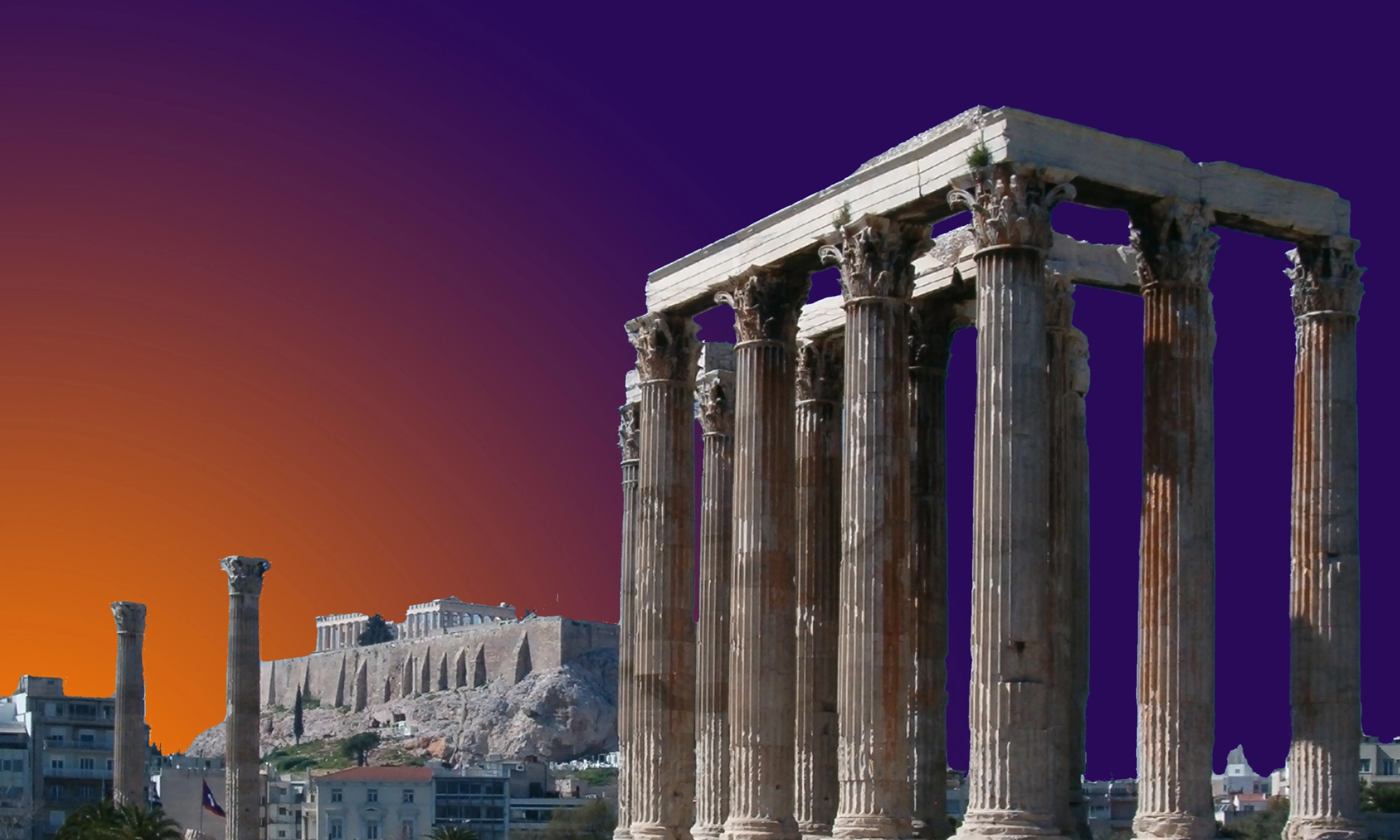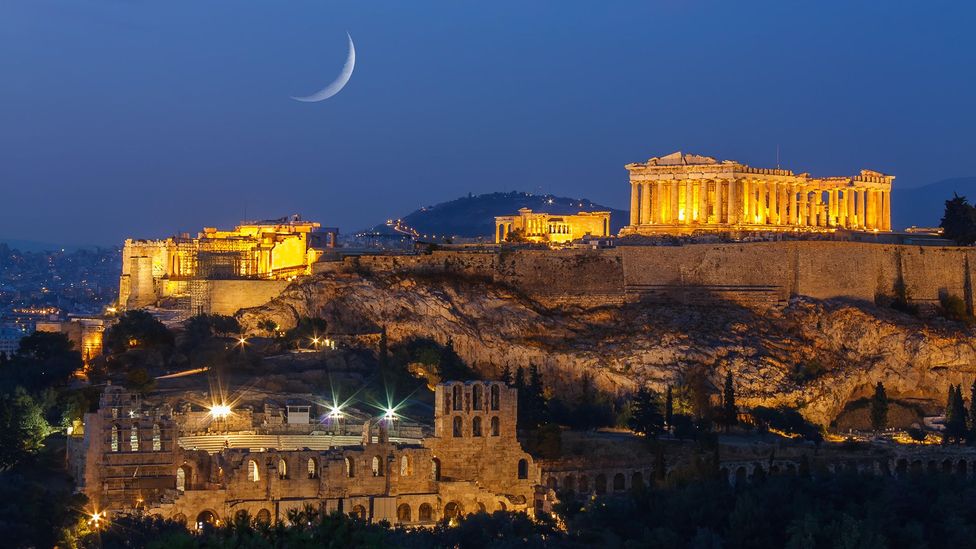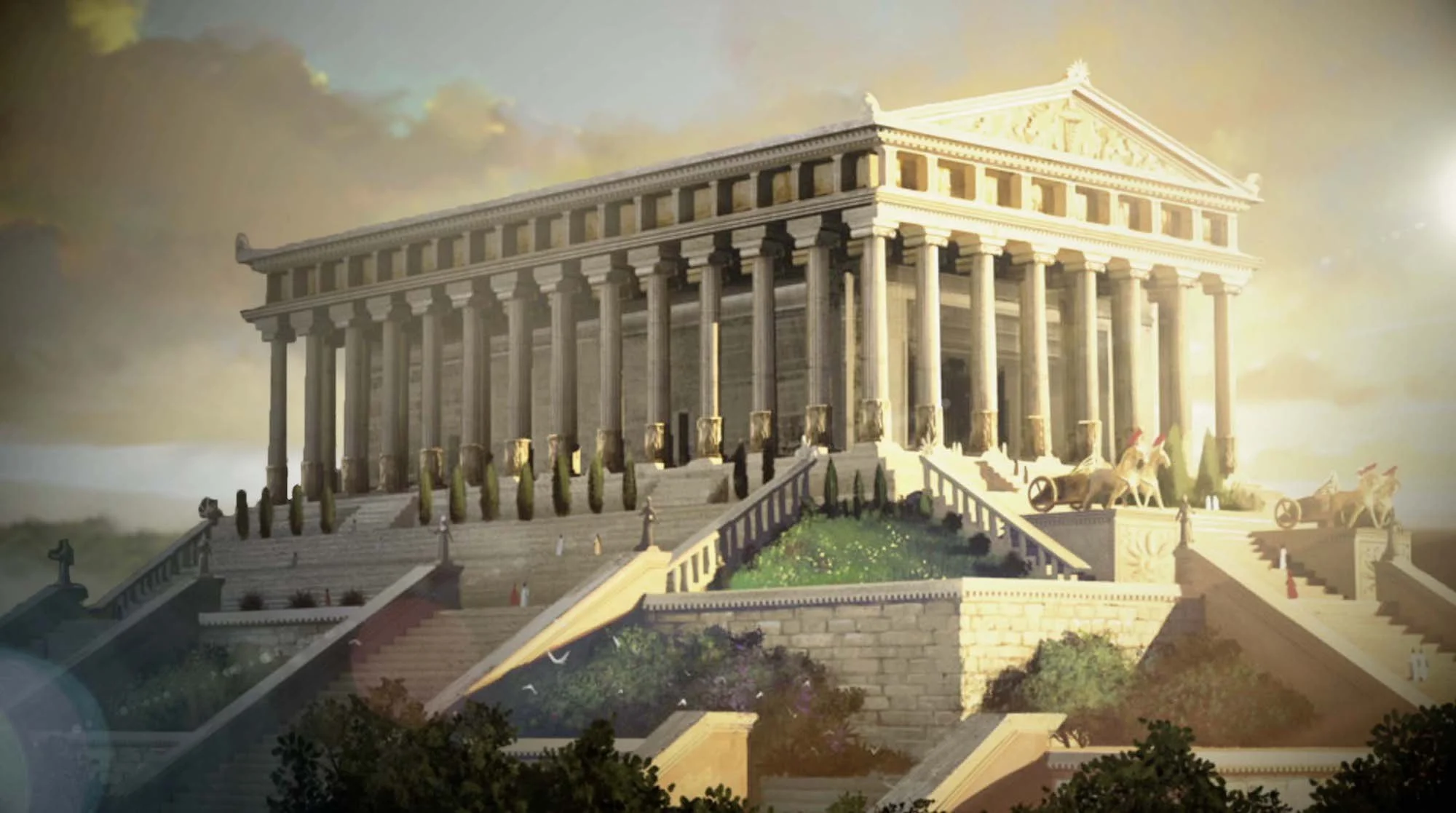Astrological Practices In Greek Temples
Uncover the celestial mysteries of ancient greek temples and their astrological connections. Explore how Greek beliefs intertwined with celestial observations and symbolism in these architectural wonders. Delve into the speculative nature of these connections, as scholars debate the exact purposes and symbolic meanings of these temples.
Author:Georgia AshcroftReviewer:Michele SievertNov 13, 202312.2K Shares436.7K Views

The ancient Greek civilization, renowned for its rich mythology, philosophy, and cultural contributions, also delved into the mystical realms of astrology. Greek temples, revered as sacred spaces dedicated to the gods, were not only architectural marvels but also sites where astrological practices played a significant role. In this article, we explore the intriguing connection between astrology andGreek temples.
Unveiling The Architectural Marvels - Greek Temples In Divine Splendor
In the tapestry of ancient Greek civilization, the grandeur of temples stands as a testament to human devotion and architectural prowess. These sacred structures were not mere edifices; they were sublime expressions of veneration, meticulously designed to honor and worship the pantheon of deities that graced the Greek cosmos.
Architectural Precision - A Divine Symphony
Greek temples were architectural wonders, each stone and column a brushstroke on the canvas of divine adoration. Crafted with unparalleled precision, these structures mirrored the celestial order, aligning with the movements of stars and the rhythms of nature. The architects, akin to cosmic choreographers, imbued their creations with a meticulousness that transcended the earthly plane.
Celestial Synergy - Aligning With The Cosmos
The layout and orientation of Greek temples were not arbitrary; they were celestial blueprints etched upon the landscape. These sacred grounds were aligned with the paths of celestial bodies, a deliberate dance choreographed to echo the movements of planets and stars. The temple's earthly embrace of the cosmic ballet symbolized a profound belief in the interconnectedness of the divine and mortal realms.
Symbolism In Stone - Deeper Meanings Unveiled
Every pillar, pediment, and frieze held symbolic significance in the grand narrative of Greek mythology. The arrangement of elements within the temple was a language, rich in allegory and meaning, speaking to the worshippers and initiates about the cosmic forces at play. The architectural symbolism was a bridge between the tangible and the celestial, weaving a spiritual tapestry that enriched the temple with layers of profound significance.
Earthly And Celestial Harmony
Greek temples were designed not as isolated sanctuaries but as integral parts of the natural landscape. The architects understood that the harmony of the earthly and celestial realms was a reflection of cosmic order. Thus, temples were often situated in locations that accentuated this harmony, invoking a sense of sacred balance that resonated with worshippers as they stepped into the divine embrace of these hallowed structures.
Spiritual Gateways - Connecting Mortals To The Divine
Beyond their physical presence, Greek temples served as spiritual gateways, facilitating a connection between mortals and the divine pantheon. The alignment with celestial bodies was not merely an aesthetic choice but a deliberate conduit for divine energy. As worshippers entered these sacred spaces, they embarked on a journey that transcended the material world, ascending through the layers of symbolism and architecture to commune with the gods above.
Celestial Synchronicity - Harmonizing Time And Space In Greek Temple Design
Temporal Symmetry - Dance Of The Cosmos
The architects of ancient Greek temples were not only builders but celestial choreographers, orchestrating structures that danced in synchrony with the cosmos. Temporal symmetry, a concept deeply ingrained in their architectural philosophy, manifested in the intentional alignment of temples with solstices and equinoxes. This was no mere happenstance but a conscious effort to weave the fabric of the sacred space into the very tapestry of cosmic rhythms.
Solstices And Equinoxes - Cosmic Pivots
As the sun reached its zenith or nadir during solstices and marked the equal day and night during equinoxes, temples aligned with these celestial events created a dynamic interplay between light and shadow. This deliberate synchronization symbolized a profound connection between the earthly realm and the celestial ballet, a harmonious resonance echoing through the sacred precincts.
Ritual Significance - Celebrating Celestial Milestones
The alignment with solstices and equinoxes wasn't a mere aesthetic choice; it infused rituals and ceremonies with celestial significance.Festivals and religious observances were intricately linked to these cosmic milestones, reinforcing the belief that the divine, like the seasons, followed a rhythmic pattern.
Planetary Influences - Gods In Celestial Garb
In the pantheon of Greek mythology, gods and goddesses found celestial counterparts in the planets that adorned the night sky. Greek temples, crafted with meticulous attention, were believed to be influenced by specific planets, each associated with deities possessing unique qualities and attributes.
Venus And Love - Aphrodite's Radiance
Temples associated with the planet Venus, named after the goddess of love, Aphrodite, exuded an aura of beauty and allure. The architectural nuances, whether in the curvature of columns or the gracefulness of statues, reflected the celestial qualities of the goddess and the planet she inspired.
Mars And War - Ares' Fervor
In contrast, temples linked to the fiery planet Mars, named after the god of war, Ares, emanated a sense of strength and martial energy. The deliberate incorporation of martial symbolism in these temples mirrored the celestial dance of the god of war across the night sky.
Jovian Majesty - Zeus And Jupiter
Temples dedicated to the king of the gods, Zeus, were often associated with the planet Jupiter. The grandiosity of these structures echoed the majestic presence of Zeus, mirroring the expansive nature of the largest planet in our celestial neighborhood.
Celestial Tapestry Unveiled - Astrological Symbols Bedecking Greek Temples
Zodiacal Imagery - A Celestial Symphony In Stone
Within the hallowed halls of ancient Greek temples, a celestial symphony unfolded through the artistry of zodiacal imagery. Astrological symbols, intricately woven into the very fabric of temple decoration, adorned friezes and metopes, transforming these sacred structures into cosmic canvases.
Cosmic Allegory
The integration of astrological symbols went beyond mere ornamentation; it conveyed a cosmic allegory that transcended the limitations of the earthly realm. The placement of these symbols on temple surfaces became a visual language, narrating the divine journey of celestial forces and their influence on mortal existence.
Sacred Geometry - Cosmic Harmony In Stone
Beneath the surface of Greek temples, a mathematical dance unfolded, guided by the principles of sacred geometry. The proportions and dimensions of these architectural marvels weren't arbitrary but intricately linked to celestial harmonies, reflecting the divine order perceived in the cosmos.
Mathematical Precision
Architects, inspired by a reverence for the cosmic ballet, applied mathematical ratios derived from celestial observations. Columns, architraves, and pediments weren't merely structural elements; they were embodiments of mathematical precision, mirroring the cosmic proportions observed in the celestial tapestry.
Spiritual Resonance
Sacred geometry wasn't a cold calculation but a conduit for spiritual significance. The use of mathematical principles and cosmic symbolism infused the very soul of the temple with a sense of divine order. Worshippers, surrounded by these meticulously crafted structures, were enveloped in an atmosphere where the earthly and celestial resonated in harmonious unity.
Intricate Fusion - Where Astrology Meets Temple Design
The intricate fusion of astrological symbols and sacred geometry marked Greek temples as more than architectural wonders; they were cosmic sanctuaries. This union wasn't a happenstance but a deliberate endeavor to infuse the earthly realm with the wisdom of the stars.
Gateway To Celestial Wisdom
As worshippers approached these adorned temples, they crossed a threshold into a realm where the language of the stars merged seamlessly with the precision of mathematical design. The zodiacal imagery and sacred geometry acted as a gateway to celestial wisdom, inviting believers to partake in a spiritual journey that transcended the mundane and reached towards the cosmic.
Echoes Of The Past - Legacy And Modern Interpretations
Contemporary Astrological Practices - Bridging Ancient Wisdom And Modern Spirituality
The ancient Greek temples, though now silent witnesses to centuries gone by, continue to exert their influence on contemporary astrological practices. In a world driven by modernity, astrologers and enthusiasts alike find inspiration in the celestial alignments and symbols intricately embedded in these venerable structures, forming a timeless bridge between ancient wisdom and present-day spirituality.
Celestial Inspirations
Astrologers delve into the rich tapestry of celestial symbolism found in Greek temples, deciphering the language of the stars as a source of guidance and insight. The zodiacal imagery and sacred geometry, once integral to religious practices, now serve as a wellspring of inspiration for those seeking a deeper connection with the cosmic forces that have shaped human consciousness for millennia.
Transcending Time
The wisdom encapsulated within the architectural marvels of ancient Greece transcends the limitations of time. As practitioners of astrology draw upon the knowledge embedded in these structures, they tap into a reservoir of cosmic understanding that spans centuries, infusing their modern interpretations with the enduring wisdom of the ancients.
Tourism And Astrological Exploration - Mystical Journeys Through Time
The allure of Greek temples, steeped in mysticism and celestial significance, has not faded with the passage of time. As archaeological discoveries unveil more about the astrological aspects of these ancient sites, a new wave of tourism emerges—one that seeks not only historical enrichment but also a profound connection with the celestial forces that once guided Greek religious practices.
Pilgrimages Of The Soul
Modern travelers, captivated by the mystique surrounding Greek temples, embark on journeys that transcend mere tourism. Pilgrimages of the soul, guided by a fascination with astrology, draw individuals to these ancient sites. Here, amidst the ruins and remnants, they seek to tap into the spiritual currents that once flowed through these sacred spaces.
Astro-Tourism - Navigating The Cosmos
The intersection of tourism and astrologygives rise to a burgeoning phenomenon known as astro-tourism. Enthusiasts with an interest in the celestial arts explore these ancient temples not only for their historical and architectural significance but also as portals to the cosmic energies that continue to linger in the stones and columns.
Cosmic Threads Woven In Stone - Astrological Symbols Adorning Greek Temples
Zodiacal Imagery - Celestial Deities In Stone
In the sacred tapestry of Greek temple decoration, astrological symbols emerged as vibrant threads, intricately woven into the very fabric of art and adornment. The zodiacal signs, each carrying the imprint of a deity or cosmic essence, graced the friezes and metopes of temples, transforming these structures into celestial canvases.
Deities In The Stars
Every zodiacal sign found its counterpart in the pantheon of Greek gods and goddesses. As worshippers gazed upon the adorned temple facades, they witnessed a divine procession of celestial deities, each signifying cosmic forces that echoed through the myths and legends of ancient Greece.
Astrological Allegory
The integration of zodiacal symbols transcended mere aesthetic embellishment; it conveyed a cosmic narrative that reached beyond the earthly realm. The placement of these symbols on temple exteriors was a deliberate choice, inviting worshippers to explore the interconnected dance of gods and stars, where fate and destiny intertwined in a celestial ballet.
Sacred Geometry - Mathematical Echoes Of The Cosmos
Beneath the surface of Greek temple architecture lay a profound understanding of the mathematical principles governing the cosmos. Proportions and dimensions were meticulously crafted based on sacred geometry, a system reflecting the cosmic order and harmony believed to govern the universe.
Mathematical Harmony
The architects, guided by a reverence for celestial harmonies, applied mathematical ratios derived from astronomical observations. The symmetry and precision of these calculations mirrored the order observed in the night sky, creating an architectural resonance that harmonized the earthly realm with the celestial domain.
Cosmic Symbolism
Sacred geometry infused the very soul of Greek temples with spiritual significance. Columns, architraves, and pediments, all adhering to mathematical principles, became more than structural elements; they became conduits for cosmic symbolism. The mathematical precision symbolized not only architectural mastery but also a spiritual attunement to the rhythms of the universe.
Intricate Fusion - Astrology And Temple Design
The marriage of astrological symbols with sacred geometry showcased an intricate fusion of two ancient disciplines: astrology and architecture. Greek temples weren't just places of worship; they were cosmic sanctuaries, where the language of the stars converged with the precision of mathematical design.
Gateway To The Divine
As worshippers entered these adorned temples, they stepped into a realm where earthly and celestial forces coalesced. The zodiacal imagery and sacred geometry acted as a gateway to the divine, inviting believers to partake in a spiritual journey that transcended the material world.
Most Important Greek Temples For Astrology
While not every ancient Greek temple is explicitly linked to astrology, some are renowned for their celestial alignments, symbolic significance, or historical context related to ancient Greek beliefs. Here's a list of some notable Greek temples with potential connections to astrology:
- Temple of Apollo at Delphi:Associated with the god Apollo, Delphi was considered the center of the world in ancient Greek religion. The Oracle at Delphi was believed to communicate divine messages, including those influenced by celestial observations.
- Parthenon (Temple of Athena Parthenos) in Athens:Dedicated to the goddess Athena, the Parthenon is an iconic temple on the Acropolis. Its architectural design may have incorporated celestial alignments, reflecting the Greeks' reverence for the divine order of the cosmos.
- Temple of Poseidon at Sounion:Perched on the cliffs overlooking the Aegean Sea, this temple dedicated to the god of the sea, Poseidon, may have been strategically oriented to observe celestial events or align with certain astronomical phenomena.
- Temple of Zeus at Olympia:Honoring the king of the gods, Zeus, this temple was part of the sanctuary at Olympia. The Greeks often associated Zeus with cosmic forces, and the temple's design may have reflected celestial symbolism.
- Temple of Hera at Samos:The island of Samos houses the Temple of Hera, dedicated to the queen of the gods. While not as well-preserved as some others, its historical significance and potential celestial alignments make it noteworthy.
- Temple of Hephaestus in Athens:This well-preserved Doric temple is dedicated to Hephaestus, the god of craftsmanship. While its primary focus is on craftsmanship, its alignment and architectural features may have subtle connections to celestial symbolism.
- Temple of Asclepius at Epidaurus:Dedicated to the god of healing, Asclepius, this temple was part of a larger healing sanctuary. The Greeks often associated healing with celestial influences, and the temple's design could reflect these beliefs.
- Temple of Athena Nike in Athens:Perched on the Acropolis, this temple dedicated to Athena Nike may have architectural elements tied to celestial symbolism. The strategic placement and design suggest a connection to broader cosmic themes.
- Temple of Artemis at Ephesus:One of the Seven Wonders of the Ancient World, the Temple of Artemis was dedicated to the goddess of the hunt. Its grandeur and historical significance may have inspired contemplation of cosmic forces.
- Temple of Demeter at Eleusis:While primarily associated with the Eleusinian Mysteries, this temple dedicated to Demeter, the goddess of agriculture, may have incorporated celestial symbolism reflecting the cyclical nature of life and seasons.
Delving into the potential astrological associations of these temples unveils the intricate interweaving of ancient Greek beliefs with celestial observations and symbolism. It's essential to note that our comprehension of these connections often involves speculation, given that the precise purposes and symbolic meanings of numerous architectural elements remain topics of scholarly debate. For further exploration of ancient Greek architecture and its cosmic significance, visit a list of greek marvels of architecture.
Greek Temples - FAQs
Did The Greeks Practice Astrology?
The ancient Greeks did practice astrology. Astrology was an integral part of Greek culture, influencing various aspects of their lives, including religion, philosophy, and daily activities. The Greeks believed that the positions and movements of celestial bodies, such as planets and stars, could impact human affairs and destinies. Astrology in ancient Greece was closely linked to the worship of gods and the interpretation of celestial phenomena as divine messages.
What Is The Astronomical Orientation Of Ancient Greek Temples?
The astronomical orientation of ancient Greek temples varied, but many were aligned with celestial events such as solstices and equinoxes. The architects of Greek temples demonstrated a keen awareness of astronomical phenomena, designing the temples to interact with the movements of the sun, moon, and stars. Some temples were oriented to capture the first rays of the rising sun during specific celestial events, while others were aligned with the broader cosmic patterns, reflecting a belief in the interconnectedness of the earthly and celestial realms.
What Is The Greek Astronomical Beliefs?
The ancient Greeks held a complex set of astronomical beliefs that combined science, mythology, and philosophy. They observed the night sky and developed a geocentric model of the cosmos, with Earth at the center. The Greeks associated various celestial bodies with gods and goddesses from their mythology. For example, the planet Venus was linked to the goddess of love, Aphrodite.
They believed that the movements of these celestial bodies influenced human affairs, and astrological practices were intertwined with religious rituals and philosophical contemplation. Greek astronomers, such as Claudius Ptolemy, made significant contributions to understanding the movements of celestial bodies, laying the foundation for Western astronomy.
Conclusion
The intertwining of astrology and Greek temples reveals a profound connection between the earthly and celestial realms in ancient Greek culture. As we explore the architectural marvels of these temples, we unearth a cosmic tapestry where gods, planets, and stars converged in a harmonious dance—an enduring testament to the enduring legacy of astrology in the heart of ancient Greek spirituality.
Jump to
Unveiling The Architectural Marvels - Greek Temples In Divine Splendor
Celestial Synchronicity - Harmonizing Time And Space In Greek Temple Design
Celestial Tapestry Unveiled - Astrological Symbols Bedecking Greek Temples
Echoes Of The Past - Legacy And Modern Interpretations
Cosmic Threads Woven In Stone - Astrological Symbols Adorning Greek Temples
Most Important Greek Temples For Astrology
Greek Temples - FAQs
Conclusion

Georgia Ashcroft
Author
Georgia Ashcroft is a seasoned astrologer and spiritual practitioner with over 5 years of experience. She holds a Master's degree in Physics from Princeton University, enriching her astrological insights with a deep understanding of scientific principles.
Georgia's published works encompass insightful analyses of astrological phenomena, including zodiac signs and horoscope interpretations, establishing her as an esteemed figure in astrological circles.
Beyond astrology, Georgia is passionate about tarot and regularly incorporates its wisdom into her spiritual practice.

Michele Sievert
Reviewer
Michele Sievert is a seasoned expert in astrology and spirituality, boasting over 10 years of experience in these transformative fields. She holds a Bachelor's degree in Astrology from the International Academy of Astrology, showcasing her dedication and expertise in the mystical arts.
Michele's insightful guidance has positively impacted numerous individuals, helping them navigate life's complexities with clarity and purpose. Her deep understanding and engaging style make her writings a trusted resource for those seeking spiritual enlightenment.
In her leisure time, she enjoys spending moments of tranquility with loved ones, fostering a balanced and fulfilling life.
Latest Articles
Popular Articles




